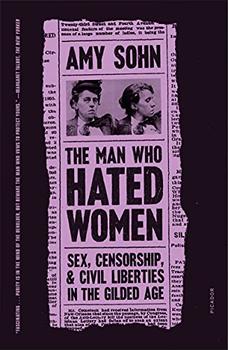Summary | Excerpt | Reviews | Beyond the Book | Readalikes | Genres & Themes | Author Bio

Critics' Opinion:
Readers' Opinion:
First Published:
Jul 2021, 400 pages
Paperback:
Jul 2022, 400 pages
 Book Reviewed by:
Book Reviewed by:
Rose Rankin
Buy This Book
Ida C. Craddock
Beginning before the Civil War, utopian communities for Separatists, Shakers, and Transcendentalists had thrived in the United States. Oneida, in upstate New York, was one of the most visible free love communities, featuring a system of polyamorous "complex marriage." Couples could choose to have "propagative" or "amative" sex. During the latter, men practiced male continence, or coitus reservatus, which the Oneida founder John Humphrey Noyes considered more pleasurable, contraceptive, and generally healthy for men, as semen loss was thought to provoke anxiety. Of male continence, in which men abstained from ejaculation through self-control, Noyes wrote that it protected women "from the curses of involuntary and undesirable procreation" and stopped "the drain of life on the part of man."
Most free lovers, however, did not believe in complex marriage as practiced by the Oneidans. Instead, they advocated for looser divorce laws and self-generated marriage contracts. Less concerned with free sex than with equal rights, free lovers supported egalitarian marriage, with fair division of work, and consensual, sometimes non-procreative sex. The free love movement, which had taken off in the 1840s, grew out of abolitionist principles: women were not to be enslaved by men, the church, or the government. From its inception, free love was closely linked with Spiritualism—the idea that living people could commune with the dead. As for sexuality, Spiritualists believed that a man and a woman could have a spiritual affinity for each other, an attraction based on complementary auras. To free lovers, this bond was superior to the marital bond.
Opposite the free lovers and Spiritualists were the Baptists, Congregationalists, and Protestants active in the YMCA. As they had in their rural communities, they wanted to protect young men from temptation in the city, guiding them to lead pious lives among pious women. These "Comstockians" opposed prostitution, into which many young women were driven by poverty and alcohol. Social purists—a strange alliance of women's rights advocates, conservative women, and temperance organizations such as the Women's Christian Temperance Union—similarly believed that marriage and the home were the backbones of society, that the family was more important than the individual, and that intercourse was only for reproduction. Interestingly, social purists (social being a euphemism for sexual) aligned with free lovers on certain issues. Both opposed the sexual double standard, which held that women were expected to be faithful but men were not, though the one side proposed male fidelity and the other polyandry as the solution.
Once Craddock returned to Philadelphia after seeing the belly dance, she felt inspired to write an essay in its defense. She sent it to The New York World, where it was published as part of a roundup of commentary on the dance. Other contributors included the American modern dance pioneer Loie Fuller, who called it a "graceful pantomime." Even the third archbishop of New York, who admitted he had not seen it, seemed supportive: "Perhaps Mr. Comstock was too sensitive in the matter, he and the good old ladies who were so shocked. They might have seen worse dances on a Saturday night in New York, dances where real evil is meant."
Craddock's essay stood out from the others. She was writing as a representative not of dance or Catholicism, but of phallic worship. Popular with European religious scholars, this area of scholarship examined the use of priapic symbols in world religions. Craddock defended the dance as the continuation of phallic worship, which taught "self-control and purity of life," meaning male and female continence. Sex, she said, was "the chief educator of the human race in things material and things spiritual." Far from shutting their eyes to the belly dance, young couples ought to learn from it. If husband and wife moved their hips like belly dancers during sex, and orgasmed spiritually, they would have heightened pleasure and fewer unwanted babies. As though that notion was not incendiary enough, she also took aim at Comstock: "Let the real significance of this dance as a religious memorial of purity and self-control be spread broadcast, so that Anthony Comstock and his helpers may be enlightened on the subject and may refrain from their attacks." It was a declaration of war on Comstock, and an advertisement for herself as a "sex-ologist."
Excerpted from The Man Who Hated Women by Amy Sohn. Copyright © 2021 by Amy Sohn. Excerpted by permission of Farrar, Straus & Giroux. All rights reserved. No part of this excerpt may be reproduced or reprinted without permission in writing from the publisher.





The Flower Sisters
by Michelle Collins Anderson
From the new Fannie Flagg of the Ozarks, a richly-woven story of family, forgiveness, and reinvention.

The House on Biscayne Bay
by Chanel Cleeton
As death stalks a gothic mansion in Miami, the lives of two women intertwine as the past and present collide.

The Funeral Cryer by Wenyan Lu
Debut novelist Wenyan Lu brings us this witty yet profound story about one woman's midlife reawakening in contemporary rural China.
Your guide toexceptional books
BookBrowse seeks out and recommends the best in contemporary fiction and nonfiction—books that not only engage and entertain but also deepen our understanding of ourselves and the world around us.